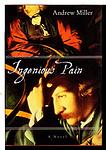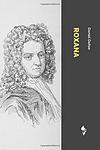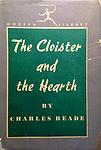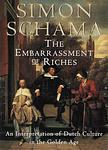The Greatest British "Netherlands" Books of All Time
Click to learn how this list is calculated.
This list represents a comprehensive and trusted collection of the greatest books. Developed through a specialized algorithm, it brings together 300 'best of' book lists to form a definitive guide to the world's most acclaimed books. For those interested in how these books are chosen, additional details can be found on the rankings page.
Genres
Countries
Date Range
Reading Statistics
Click the button below to see how many of these books you've read!
Download
If you're interested in downloading this list as a CSV file for use in a spreadsheet application, you can easily do so by clicking the button below. Please note that to ensure a manageable file size and faster download, the CSV will include details for only the first 500 books.
Download-
1. A Time Of Gifts by Patrick Leigh Fermor
The book is a vivid memoir that chronicles the adventures of a young man as he embarks on a remarkable journey on foot across Europe in the 1930s. Starting from the Hook of Holland, he traverses through landscapes and cities, encountering a diverse tapestry of cultures, languages, and historical remnants. Along the way, he is welcomed by a variety of individuals, from aristocrats to peasants, who enrich his experience with their stories and hospitality. His travels provide not only a physical journey through the continent but also a journey through time, as he reflects on the complexities of Europe's past and the ominous shadows cast by the approaching Second World War.
-
2. The Girl With The Pearl Earring by Tracy Chevalier
Set in 17th century Delft, the novel revolves around a young woman who becomes a maid in the household of the famous painter Johannes Vermeer. As she becomes immersed in the artist's world, she grows close to Vermeer, eventually becoming the subject of one of his most renowned paintings. The story explores themes of art, beauty, and the complex dynamics of power, class, and desire, as it follows the protagonist's journey from innocence to awakening amidst the rich tapestry of Dutch Golden Age society.
-
3. Ingenious Pain by Andrew Miller
The book explores the life of James Dyer, a man born in 18th century England with a peculiar condition - he cannot feel physical pain. Despite this, Dyer's life is far from painless as he navigates through various experiences, from working as a sideshow attraction to becoming a surgeon. As he encounters love, loss, and the complexities of human existence, Dyer's inability to feel pain becomes both a blessing and a curse, leading him on a journey of self-discovery and ultimately questioning the true nature of pain and its role in shaping our lives.
-
4. Vermeer by Lawrence Gowing
"Vermeer" is an in-depth study of the life and works of the renowned Dutch painter, Johannes Vermeer. The book provides a comprehensive analysis of Vermeer's artistic style, techniques, and the unique qualities that distinguish his work from other artists of his time. With a focus on individual paintings, it explores the subtleties and complexities of Vermeer's art, offering readers an intimate understanding of his mastery in capturing light, color, and human emotion.
-
5. Roxana: The Fortunate Mistress by Daniel Defoe
This novel tells the story of a beautiful and intelligent woman who, after being abandoned by her financially irresponsible husband, navigates the treacherous waters of 18th-century English society to secure her and her children's future. Facing moral and societal challenges, she assumes the identity of "Roxana" and uses her wit, beauty, and charm to ascend the social ladder, becoming the mistress of several wealthy men. Throughout her journey, she grapples with the consequences of her choices, the pursuit of wealth and status, and the desire for independence in a male-dominated world. The narrative explores themes of femininity, morality, and survival, offering a complex portrait of a woman striving to control her own destiny in a time when women's options were severely limited.
-
6. The Cloister and the Hearth by Charles Reade
Set in the 15th century, this historical novel tells the story of a young Dutch artist named Gerard Eliassoen, who abandons his lover, Margaret, and their children to become a Dominican friar, while she, believing him dead, becomes a nun. The narrative follows Gerard's adventures across Europe, his struggles with his faith, and his eventual reunion with Margaret. The novel explores themes of love, faith, and duty, and provides a vivid depiction of medieval life.
-
7. Curious Naturalists by Niko Tinbergen
"Curious Naturalists" is a captivating exploration of the natural world through the eyes of a pioneering ethologist. The book delves into the author's detailed observations and experiments with various animal species, revealing their complex behaviors and the methods used to study them. Through engaging anecdotes and insightful analysis, the author demonstrates how curiosity-driven research can lead to profound discoveries about the ecological interactions and evolutionary adaptations of animals. This work not only highlights the intricacies of animal behavior but also underscores the importance of field studies in understanding the natural environment.
-
8. The Embarrassment Of Riches by Simon Schama
"The Embarrassment of Riches" is an expansive historical analysis that delves into the culture, society, and identity of the Dutch during the height of their Golden Age in the 17th century. The book explores how the Netherlands, a small, newly independent nation, managed to become a global economic powerhouse and a cradle of artistic and intellectual innovation. Through a rich tapestry of details, the author examines various aspects of Dutch life, from domestic interiors and public rituals to the values and anxieties of the era, illustrating how the wealth accumulated from trade and colonial expansion influenced Dutch culture, morality, and social customs.
-
9. The Ascent of Money: A Financial History of the World by Niall Ferguson
This book provides a comprehensive history of money, credit, and banking, tracing their evolution from ancient times to the present. It explores how financial systems have shaped human history, from the rise and fall of empires to the development of modern economies. The book delves into the origins of the stock market, the true nature of insurance, the perils of inflation, the importance of property rights, and the role of financial innovation in economic growth. It also examines the causes and consequences of financial crises, offering valuable insights into the complex relationship between finance and society.
-
10. Going Dutch by Lisa Jardine
"Going Dutch" explores the profound influence of Dutch culture and innovation on seventeenth-century England during the reign of William III and Mary II. The book delves into how the Glorious Revolution led to a significant transfer of intellectual and cultural ideas between the Dutch and the English. It examines the impact of this cross-cultural exchange on various aspects of British life, including art, science, trade, and politics, highlighting how Dutch expertise and practices were instrumental in transforming and modernizing England. The narrative provides a detailed analysis of the period, illustrating the lasting impact of Dutch influence on British society.
Reading Statistics
Click the button below to see how many of these books you've read!
Download
If you're interested in downloading this list as a CSV file for use in a spreadsheet application, you can easily do so by clicking the button below. Please note that to ensure a manageable file size and faster download, the CSV will include details for only the first 500 books.
Download








